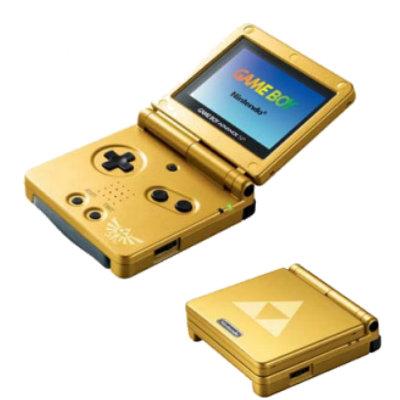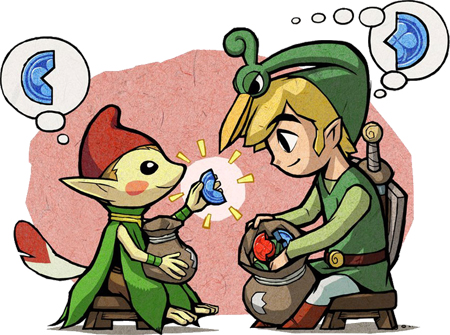
This Month in Nintendo History: January 2005

Zelda fans were well catered for with Nintendo’s original Game Boy, what with Link’s Awakening that saw the hero in green seek out the method of waking the Wind Fish, and the two Capcom collaboration games Oracle of Seasons and Oracle of Ages, which required Link to save Din and Nayru respectively. With the release of the Game Boy Advance, Nintendo fans were no doubt looking forward to more sword thrusting and shield bashing from the acclaimed series.
Much like Mario’s first game for the Game Boy Advance however, Nintendo started off with a port. This port in question was A Link to the Past from the Super Nintendo Entertainment System. Although this wasn’t the new game the fans wanted, many were content with it regardless, primarily because of the overall quality of the original that was maintained in the porting process, and the included Four Swords sidegame, though due to each linked Game Boy needing its own cartridge that wasn’t fully appreciated until the updated DSiWare download version in the past few months. With relatively good sales success for the game, fans kept a watchful eye on the horizon for the GBA’s first true Zelda game.

Nintendo sure do love their shiny handhelds. Gold 3DS next please!
And in January 2005 lucky US gamers got it, with a touch of Capcom mixed in once more. The Legend of Zelda: The Minish Cap took the cartoonish art style of The Wind Waker and made it its own. Taking the mechanics behind the shrinking Gnat Hat item from the Four Swords extra in the previous GBA Zelda, and expanding its usability to the entirety of Hyrule, this new game caused ripples in the logic pools of timeline theorists by claiming it to be set before Ocarina of Time. Much like Skyward Sword’s origin story for the Master Sword, Minish Cap wove the tale behind Vaati the evil wind sorcerer and the Four Sword blade that would be his prison for two more games set later on. Link’s companion this time around would be the wizened sage Ezlo, cursed into cap-with-a-beak form by Vaati. With Ezlo’s aid your blond-haired young elf could alter his size to explore areas, conquer dungeons, and outwit foes.
The Minish Cap further refined the already polished 2D Zelda gameplay, and introduced a more community-derived aspect with the Kinstone collectables; fragments of stone obtained from patches of grass, chests, enemies, and character interaction that, when combined with the rest of the original crest in someone else’s possession, would unlock a secret in the game world. Skyward Sword’s Goddess Cubes are similar in this regard, which isn't too much of a surprise given that the director for both games is the same. The focus on overworld content and exploration in The Minish Cap was undoubtedly expanded to a whole new level in the MotionPlus-equipped Wii title too.

Did anyone actually finish that sidequest? Talk about a monumental undertaking!
To date, The Minish Cap stands as the last true 2D single player Zelda experience, with Nintendo utilizing an isometric three-dimensional perspective and excessive touch-screen input for the two DS games that followed later years, and of course a full world perspective within the 3DS-enchanced Ocarina of Time up-port. Committed fans who bought 3DS early before its unprecedented price slash may have rightly felt ripped off, but few could deny with a straight face that The Minish Cap, together with the other nine Game Boy Advance games, is worthy compensation.

 Sign In
Sign In 02.01.2012
02.01.2012  SirLink
SirLink 


 Link to this post:
Link to this post: 

 Subscribe to this topic
Subscribe to this topic Features
Features





 Top
Top

